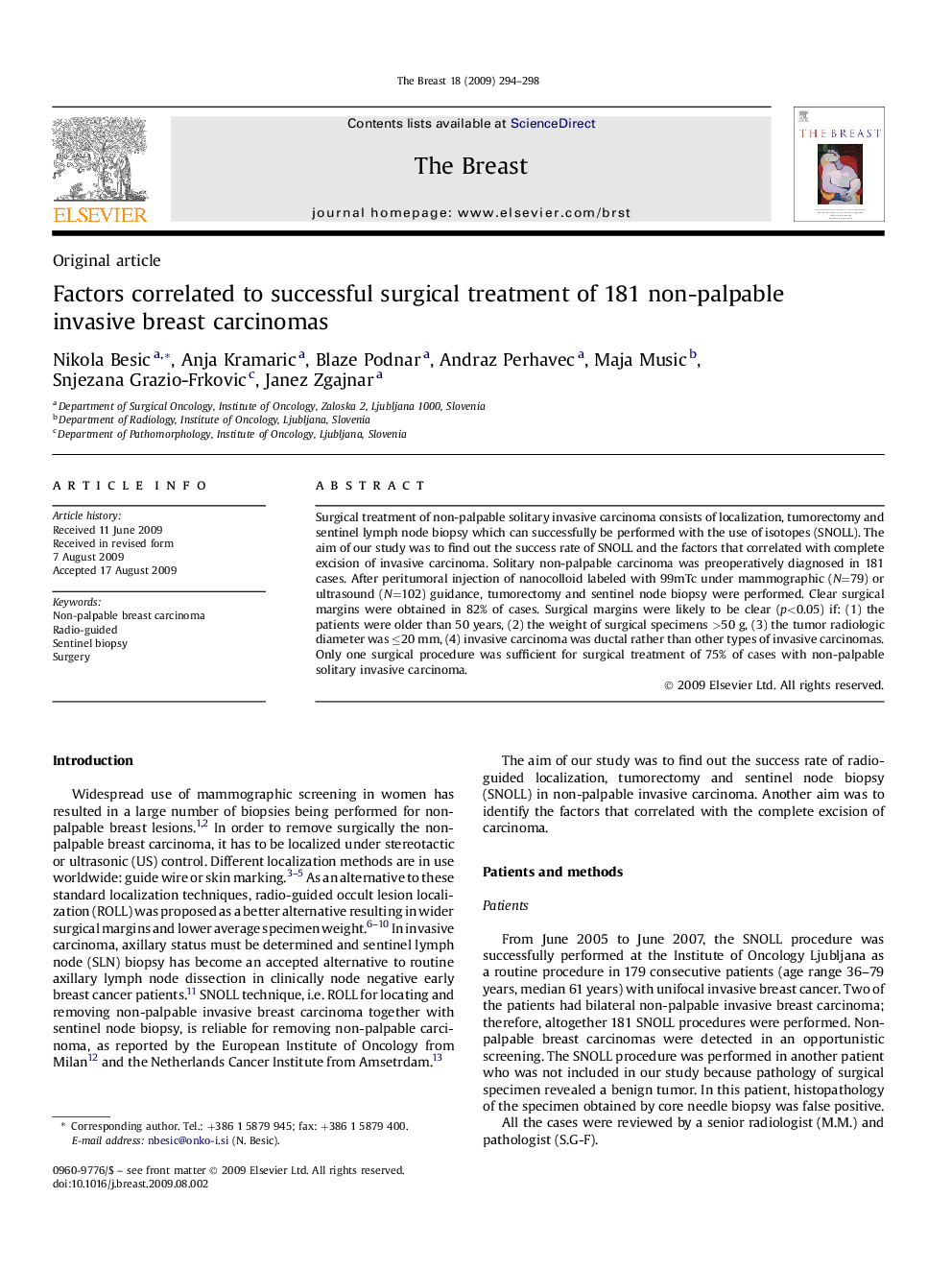| Article ID | Journal | Published Year | Pages | File Type |
|---|---|---|---|---|
| 6170475 | The Breast | 2009 | 5 Pages |
Surgical treatment of non-palpable solitary invasive carcinoma consists of localization, tumorectomy and sentinel lymph node biopsy which can successfully be performed with the use of isotopes (SNOLL). The aim of our study was to find out the success rate of SNOLL and the factors that correlated with complete excision of invasive carcinoma. Solitary non-palpable carcinoma was preoperatively diagnosed in 181 cases. After peritumoral injection of nanocolloid labeled with 99mTc under mammographic (N=79) or ultrasound (N=102) guidance, tumorectomy and sentinel node biopsy were performed. Clear surgical margins were obtained in 82% of cases. Surgical margins were likely to be clear (p<0.05) if: (1) the patients were older than 50 years, (2) the weight of surgical specimens >50 g, (3) the tumor radiologic diameter was â¤20 mm, (4) invasive carcinoma was ductal rather than other types of invasive carcinomas. Only one surgical procedure was sufficient for surgical treatment of 75% of cases with non-palpable solitary invasive carcinoma.
